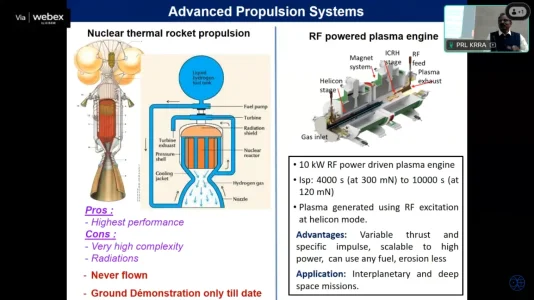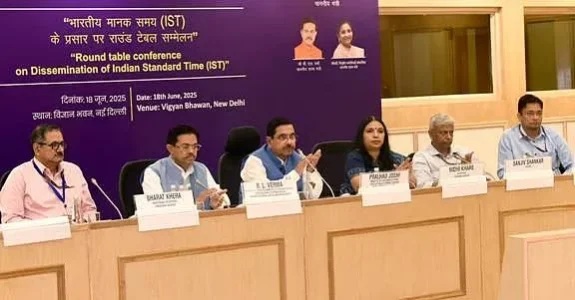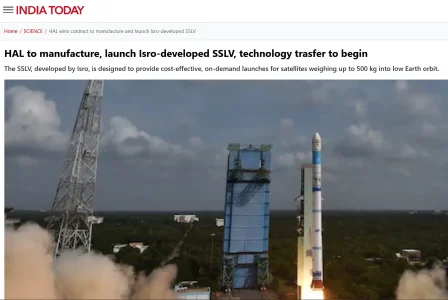The SSLV, developed by Isro, is designed to provide cost-effective, on-demand launches for satellites weighing up to 500 kg into low Earth orbit.

www.indiatoday.in
HAL to manufacture, launch Isro-developed SSLV, technology trasfer to begin
The SSLV, developed by Isro, is designed to provide cost-effective, on-demand launches for satellites weighing up to 500 kg into low Earth orbit.

SSLV launches on final development flight with EOS-08. (Photo: Isro)
 Sibu Tripathi
Sibu Tripathi
New Delhi,UPDATED: Jun 20, 2025 14:40 IST
Subscribe to Notifications
In Short
- The transfer of SSLV technology is seen as a strategic st
- Isro will provide HAL with the full design know-how and technical support
- HAL is expected to build the first two SSLVs with Isro’s assistance
In a landmark move for India’s space sector, the Indian National Space Promotion and Authorisation Centre (IN-SPACe) has officially transferred the Indian Space Research Organisation’s (Isro) Small Satellite Launch Vehicle (SSLV) technology to Hindustan Aeronautics Limited (HAL).
This transfer empowers HAL to take charge of manufacturing, marketing, and l
aunching the SSLV for commercial small satellite missions, marking a new era of private sector participation in India’s space program.
A contract will be signed between HAL, Isro, NSIL and In-Space to begin the transfer process.
The SSLV, developed by Isro, is designed to provide cost-effective, on-demand launches for satellites weighing up to 500 kg into low Earth orbit.

Its flexibility and rapid turnaround make it ideal for the booming global market of small satellites, which are increasingly used for communications, earth observation, and research.
The transfer of SSLV technology is seen as a strategic step to boost India’s share in the global satellite launch market, which is projected to grow significantly in the coming years.
"Our vision is to drive the growth of the space sector through increased private participation. We’re focusing on the small satellite launch market, with the SSLV now fully proven. Startups like Skyroot and Agnikul are gearing up for their first orbital launches, and within the next two years, we aim to establish a robust, battle-tested small satellite launch capability. To support this,
we are developing a third launch pad, setting up a manufacturing unit in Tamil Nadu, and building the necessary infrastructure to make India a globally attractive destination for small satellite launches," IN-Space Chairman Pawan Goenka said.
He added that the goal is to achieve a launch every two weeks. "Market share will ultimately be determined by performance, competitiveness, rocket reliability, and cost-effectiveness of these three organisations," Goenka said.
Under the agreement, HAL will not only manufacture the SSLV but also handle its commercial operations, including marketing and launch services for domestic and international clients.
This is the first time India has fully privatised a launch vehicle program, going beyond manufacturing contracts to grant a private entity end-to-end responsibility for a national rocket.
The move follows a rigorous selection process. The final competition was between Alpha Design, HAL and Bharat Dynamics. HAL won the contract with a bid amount of Rs 500 crore.
Isro will provide HAL with the full design know-how and technical support during the initial phase.
HAL is expected to build the first two SSLVs with Isro’s assistance before independently manufacturing and launching subsequent rockets.
The technology transfer includes not just hardware but also the operational expertise required to
assemble, integrate, and launch the SSLV.
This collaboration is expected to accelerate India’s ambitions in the commercial space sector, enabling faster, more frequent launches and attracting global customers seeking reliable and affordable satellite deployment.
The successful handover of SSLV technology to HAL is a testament to India’s maturing space industry and the government’s commitment to fostering innovation and private enterprise in space.
Published By:
Sibu Kumar Tripathi
Published On:
Jun 20, 2025










